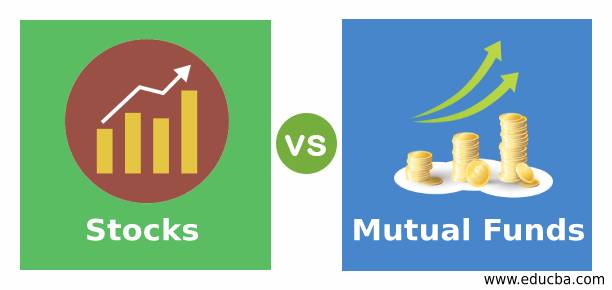Equity funds make investments in stock and other relevant securities in accordance with regulations made by the Securities and Exchange Board of India, all equity mutual funds have to invest atleast 65% of their corpus into equities. While market risks apply to all equities and equity-related assets, distinct forms of equity securities have unique risk profiles. The size of the company or market capitalization is one of the key risk factors for equities.
Stocks have been divided up by SEBI into three market cap categories:
Large cap: Stocks in the top 100 by market cap are considered to be large cap stocks. These businesses stand out for their scale, market dominance in their respective business sectors, increased financial stability, and extensive public ownership. Investors believe large-cap stocks to be less risky, and as a result, they are valued higher.
Mid cap: Stocks ranked 101st to 250th by market capitalisation are considered midcap stocks. In comparison to large scale corporations, these businesses are typically smaller and younger. Midcap stocks have a substantially lower percentage of free float shares (shares held by the public) than large cap stocks. Midcap stocks trade at lower valuations than large cap stocks because they are thought to be riskier than large cap equities. Midcap equities, however, offer a better potential for earnings growth than large cap stocks. Midcap companies tend to be more volatile than large cap stocks in the short term, despite the potential for longer-term gains that are larger than large cap equities.
Small Cap: Stocks with rank of 251st or less in terms of market capitalisation are considered small cap stocks. Despite having larger returns potential over the long run than midcap and large cap equities, small cap stocks are considered as being riskier than large cap and mid cap companies. In the short run, small cap stocks can be incredibly volatile. In India, promoters or members of their families own the majority of small-cap companies, which have a far lower percentage of freely floating shares than midcap and large-cap equities. Compared to midcap and small cap equities, small cap companies may have significantly less liquidity during extreme market situations.
It is difficult to assess which particular category of mutual funds can be considered as best mutual fund however one can check out the performance of all direct mutual funds at Kuvera which is a zero commission-based investment platform. Click here to check out the performance of the best mutual funds in India.
Classification Of Equity Funds Basis Market Capitalization
Large Cap Funds: In accordance with SEBI regulations, large cap funds are required to invest at least 80% of their assets in large cap equities. The remaining funds may be used to buy midcap, small size, and other securities. To spread risks, these funds invest across industry sectors. If you want to invest in large-cap funds without paying any commission or brokerage click here.
Midcap Funds: Midcap funds must invest at least 65 percent of their assets, as required by SEBI, in midcap stocks. The remaining funds can be used to buy large- and small-cap stocks, among other things. To spread risks, these funds invest across industry sectors.
Small Cap Funds: In order to comply with SEBI regulations, small cap funds must devote at least 65 percent of their corpus to small cap stocks. The remaining funds may be invested in large-cap, mid-cap, and other securities. To spread risks, these funds invest across industry sectors.
Large And Midcap Funds: According to SEBI’s mandate, large and midcap funds must invest at least 35% of their corpus in large cap stocks and 35% of their corpus in midcap stocks. Stocks in any market cap category and other assets can be purchased using the remaining assets. To spread risks, these funds invest across industry sectors.
Classification Of Equity Mutual Fund Basis Investment Strategy
Equity mutual funds can be divided into subcategories based on investment styles in addition to market cap divisions.
Dividend Yield Funds: Funds that invest primarily in high dividend-yielding stocks are known as dividend yield funds. A stock’s dividend yield is determined by dividing its dividend payment by the stock’s current market value. Stocks with a high dividend yield typically belong to mature businesses with reliable cash flows and business plans. Thus, they are regarded as being less dangerous.
Value Funds: Value funds use a value-based investing approach. The funds make investments in businesses that are trading below their true value. The term “factor of safety” refers to this discount in the context of value investing. Following a thorough examination of the company, fund managers determine the intrinsic value of a stock. Value companies typically exhibit low price-to-earnings or price-to-book multiples and higher-than-average dividend yields. Sometimes value investing is also known as counter-investment.
Focused Funds: In accordance with SEBI’s regulations, focused funds may only invest in a total of 30 stocks. These funds have higher concentration risks than more diversified equities funds because they can only hold up to 30 stocks. These funds have the potential to provide superior alphas if the fund manager makes wise stock selections.
Sectoral or Thematic Funds: To comply with SEBI’s mandate, these funds must allocate at least 80% of their assets to a single industry or topic. Investors need to be aware of the distinction between a sector and a theme. Sectoral funds invest in a single industry sector, such as infrastructure, FMCG, pharmaceuticals, technology, or finance. On the other hand, an investment theme may cover a number of industries. Consumption theme, for instance, can include media and entertainment, autos, banking and financial services, consumer durables, and consumer non-durables. Similarly, the healthcare theme might include more industries than only pharmaceuticals, such as hospitals, diagnostic centres, wellness items, health insurance, etc. Sectoral funds lack the diversity of thematic funds. However, compared to diversified equities funds, both thematic and sectoral funds have larger sector risks.
Frequently Asked Questions
- Is investing in large-cap mutual funds safe?
Investment in mutual funds is subject to market risk. Even in case of large-cap mutual funds there are no guaranteed returns. However, historically large-cap funds have shown less fluctuation than midcap and smallcap mutual funds.
- Are index funds, large-cap funds?
Not all index funds are large cap. However, index funds which are tracking NIfty 50 and Sensex are large-cap mutual funds.

